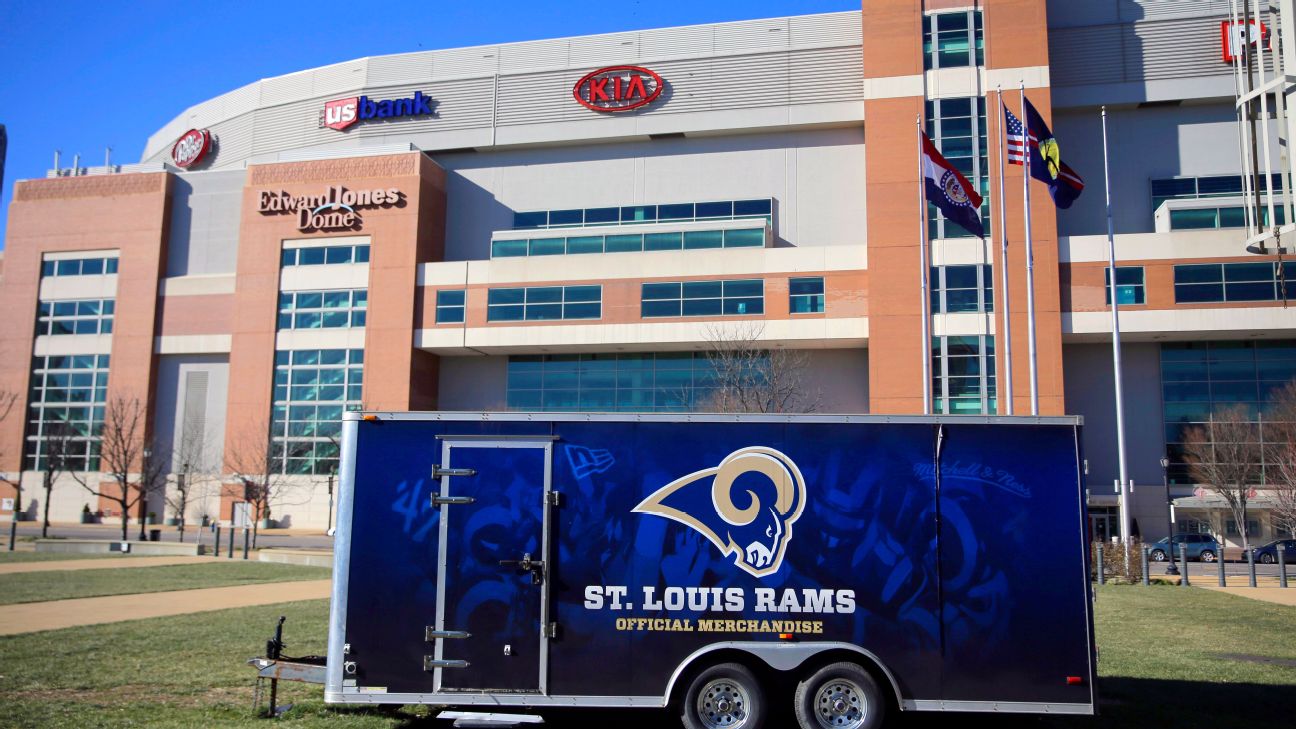Open Extended Reactions
Sometimes, the best ideas come from inside the ESPN offices
Last week in Bristol, Connecticut, I was talking to an editor about the long-departed Hartford Whalers and how they originally found their place in the NHL. “If you were starting the NHL today, you probably wouldn’t put a team in Hartford,” the editor said offhand.
That got me thinking about an idea I’ve kicked around for a long time. In England, a country roughly the size of Ohio, there are 92 professional clubs across the first five divisions of their soccer pyramid. (A couple of those teams are Welsh, to be fair.) This past season alone, seven of 20 teams in the top-flight Premier League were in London. Two play in Liverpool, with massive stadiums a 20-minute walk away from each other. By the bottom of the professional pyramid, stadium capacities drop down to a couple of thousand, but you get the idea: There are a lot of teams in a very small area.
In America, things have evolved differently. While minor league baseball has spread out across the country, those teams aren’t independent. There’s no promotion and relegation. Teams leave their local fans and move to another city or even another coast without repercussions. Franchises have been granted the rights to their cities and push back if anyone moves into their territory. Leagues expanded and contracted during much of the 20th century, but as they have become multibillion-dollar industries, the four major American men’s sports have turned into closed shops, with the NFL as the most prominent example. The league hasn’t admitted a new member since the Houston Texans in 2002, leaving dozens of football-loving cities out of professional football.
We can’t fix all of that, but we can imagine something better. Let’s say a lawsuit opened up the league for business and prevented the NFL from limiting itself to 32 teams. If England can support 92 professional soccer teams, America can do better. In a universe in which the league didn’t retain the right to keep new members out, how many professional teams could the U.S. support? Could it be 100? And if so, where would those teams go?
I’m going to explore that universe and find homes for 100 professional football teams across America. I’m not going to focus on promotion and relegation, how the schedule would work or how the play on the field might evolve, but I’ll instead focus strictly on where these teams would play. Let’s lay out some ground rules and the logic I used in trying to make this work:
- No NFL teams are disappearing as part of this exercise. The 32 existing franchises are sticking around. As part of the new 100-team league, though, several will need to make decisions about where they play versus where they represent. Teams that have stadiums outside the area they purport to represent will either need to move to where they’re supposed to be or change their name and let someone else move in to take their place.
- No team holds any territorial rights. If someone wants to finance a professional team in Fort Worth, Texas, and compete for the hearts of Dallas-area fans, Cowboys owner Jerry Jones can’t do anything about it.
- New cities and franchises were selected on a variety of factors. New teams are going to want as many fans as possible, so my first priority was finding places that had large population centers. I also considered whether each city had access to an existing football stadium and/or had a history of supporting football.
- Fans aren’t going to change their allegiances overnight. At the same time, while there might be some fans in Fort Worth who would become fans of a new franchise, most people who have spent their life rooting for the Cowboys aren’t suddenly about to change their mind. I tried to be realistic about how adding a team to each area might impact fandom, and how saturated a market is with fans for each team. I was more aggressive putting new franchises next to each other as opposed to putting a new franchise next to an already-successful team.
As an example, Milwaukee obviously has more than enough of a population to support its own NFL team, given that the city has more than 560,000 people who already root for the NBA’s Bucks. Would it make sense to put a team there as part of this top-100 group? With the Packers having already put down roots just over 100 miles away and establishing themselves as Milwaukee’s team, it would be incredibly difficult for a Milwaukee-based franchise to establish itself. In New York, on the other hand, there are simply so many people that the Giants and Jets might not be enough.
There’s some crossover happening between college and pro football. In real life, the lines between college and pro football have been blurred by the impact of NIL money. Perhaps the lines are blurred further in this 100-team league. I’m not suggesting Alabama, Notre Dame and Penn State are going to field NFL teams, but putting pro teams in their respective locales might make some sense, especially because they have existing stadiums.
I’ve included a number of college cities as potential landing spots for teams here, although I’ve left others out if there’s a notable NFL team nearby. Do they exist as a hybrid team with professional status and the history of the college football team? Are they a smaller franchise that relies upon the existing fan base of the school and probably focuses on signing alumni of that college in free agency? I’ll let you decide.
In the end, I found 68 new teams to join the existing 32 to make 100 professional football franchises. Regions can overlap and have murky definitions, so don’t get too attached to where each team lands, but I’ve separated the country into a handful of sections and will address our new additions spot by spot. Let’s begin in the football hotbed of America: Texas is way too big for just two teams, but how many more could we add?
Jump to a region:
- California
- Florida
- Mid-Atlantic
- Mid-South
- Midwest
- New York/New Jersey
- Noncontiguous states
- Northeast
- Pac. Northwest
- Southeast
- Southwest
- Texas
- West
Texas (9 total teams)
NFL teams that already exist: Dallas Cowboys, Houston Texans
We’ll throw Jerry Jones’ family a bone here. While they’re going to be prevented from suing to try to keep most of Texas for themselves, we won’t put another team in Fort Worth or Arlington to try to compete with the Cowboys. Likewise, the Texans will retain Houston, America’s fourth-most populous city, entirely for itself. Instead, we’re placing six new teams around different parts of the state, many of which are several hours away from any of the others.
- San Antonio: Already the most populous city in the country without an NFL team, San Antonio is 200 miles from Houston and 285 miles from Dallas, leaving a large area of potential fans to try to add. The city already rabidly supports its Spurs, and it already used the Alamodome to house teams in various spring football leagues, most recently the Brahmas of the UFL. Among cities that haven’t housed NFL teams in the past, San Antonio is easily the best expansion candidate.
- Austin: The capital city has rapidly grown in recent years with an influx of tech workers from out of state, leaving the potential for a new team to win the hearts and minds of Austinites. The city recently landed its first professional men’s team, Austin FC in Major League Soccer, and already has a 100,000-plus seat stadium in place for the University of Texas.
- Waco: Between Austin and Dallas on I-35, Waco might be just far enough from either city to justify another team in this football-obsessed state. There’s already a significant stadium on site for Baylor in McLane Stadium. I struggled to pick between Waco and College Station as a potential option here; Waco being a larger metro area helped it make the 100. College Station will be on our list for expansion when we make this the 150.
- Corpus Christi: In trying to spread teams around the state, identifying Corpus Christi as a potential franchise for south Texas makes sense. San Antonio also qualifies as southern Texas, but Corpus Christi is more than two hours south of its neighbor and has a population of more than 300,000 people in its own right. It already supports a minor league team for the Astros.
- Lubbock: Moving further west in this sprawling state, there’s a window for a team once we get several hundred



